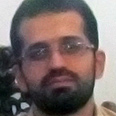
The killing of Iranian professor Mostafa Ahmadi Roshan on Wednesday was the latest in a series of hits on scientists who are linked to the Islamic Republic's nuclear program, which Israel and other Western nations are desperately trying to halt.
According to Iranian media reports, the incident, which took place at the Seyed Khandan neighborhood in northern Tehran, "looks similar to attacks on nuclear scientists in the city," more than one year ago.
Tehran's deputy governor was quick to say that Israel was behind the "assassination… aimed at militarizing the (diplomatic) situation, and disrupt the elections in Iran."
Related articles:
- 'Mossad recruiting Iranian refugees in Iraq'
- Iran: IAEA report risks our scientists' lives
- Iran vows to protect nuclear scientists
- Iran vows to protect nuclear scientists
American blogger Richard Silverstein claimed that a senior Israeli source "with great political and military experience" told him that the Mossad carried out the hit along with Iranian opposition group the People's Mujahedin of Iran (PMOI).
In addition to the targeted killings of scientists, the three explosions which took place in Iran within a month towards the end of 2011 indicate that some element has already waged a military campaign against Tehran.
The first Iranian scientist to be killed was nuclear physicist Massoud Ali Mohammadi. His death in January 2010 came at a time when the international community was weighing harsher sanctions against Tehran but was not discussing the option of a military strike on its nuclear facilities. The regime in Tehran blamed "American and Zionist" agents for his death.
In November of that same year bombs placed on a car by motorcyclists killed nuclear scientist Majid Shahriari and wounded nuclear physicist Fereidoun Abbasi. Iranian state television reported that "agents from the Zionist regime" orchestrated the attack because the sanctions imposed on Iran were not hindering its nuclear program.
According to reports, Shariari was an expert in uranium enrichment, and both he and Abbasi were members of a taskforce set up by the Defense Ministry to advance the nuclear program.
Eight months later, gunmen shot dead physicist Darioush Rezai outside his home in Tehran. Rezai worked for Iran's Atomic Energy Organization. His wife was also killed in the attack.
Since then, the attacks have focused on the Revolutionary Guard. On November 12, 2011 an explosion rocked a base belonging to the elite unit, killing a senior officer who was considered the founder of the Iranian missile program and several other people. Tehran claimed the blast was an accident, but American blogger Silverstein quoted Israeli sources as saying that the Jewish state was responsible.
About two weeks later another explosion occurred near Isfahan. According to the Times, the blast caused severe damage to a uranium enrichment facility located just outside the city. Israeli sources told the British daily there was no doubt the blast had damaged the facility and that it was not accidental.
On December 12 Iranian media outlets reported that 16 people were killed in an explosion at a steel factory.
Ynet's military analyst Ron Ben-Yishai said the blast may be linked to a German report according to which North Korea had been providing Iran and Syria with "maraging" steel needed for the production of new centrifuges for uranium enrichment and the manufacturing of exhaust systems for missile engines.
The apparent covert campaign also included two computer virus attacks on Iran's nuclear facilities.
Iran acknowledged that the highly sophisticated Stuxnet computer worm disrupted the activity of a number of centrifuges at its main uranium enrichment facility. The New York Times reported that Israel had tested the effectiveness of the virus in its Dimona reactor before it was used to attack Iran's nuclear sites.
In September 2011 it was reported that a second computer virus – Duqu – attacked computers at Iranian nuclear facilities. According to Russian computer security firm Kaspersky Lab, Stuxnet and Duqu were just two of at least five cyber weapons developed on a single platform whose roots trace back to 2007 – meaning the Iranians have even more cause for concern.
On Tuesday Chief of Staff Lieutenant General Benny Gantz said there may be more "unnatural" events in Iran.
Speaking at a Knesset Foreign Affairs and Defense Committee meeting, Gantz warned that "2012 will be a critical year in the connection between Iran gaining nuclear power, changes in leadership, continuing pressure from the international community and events that happen unnaturally."















